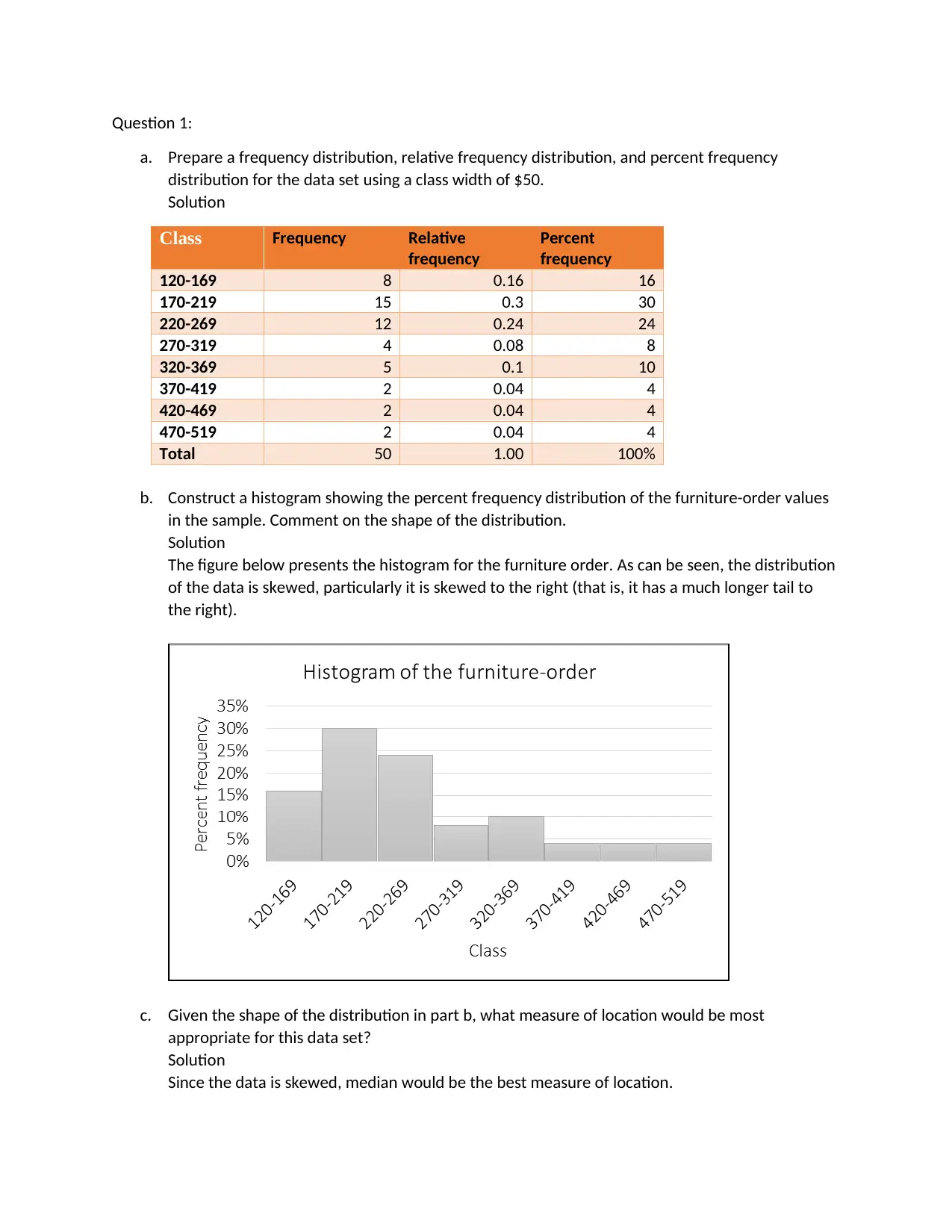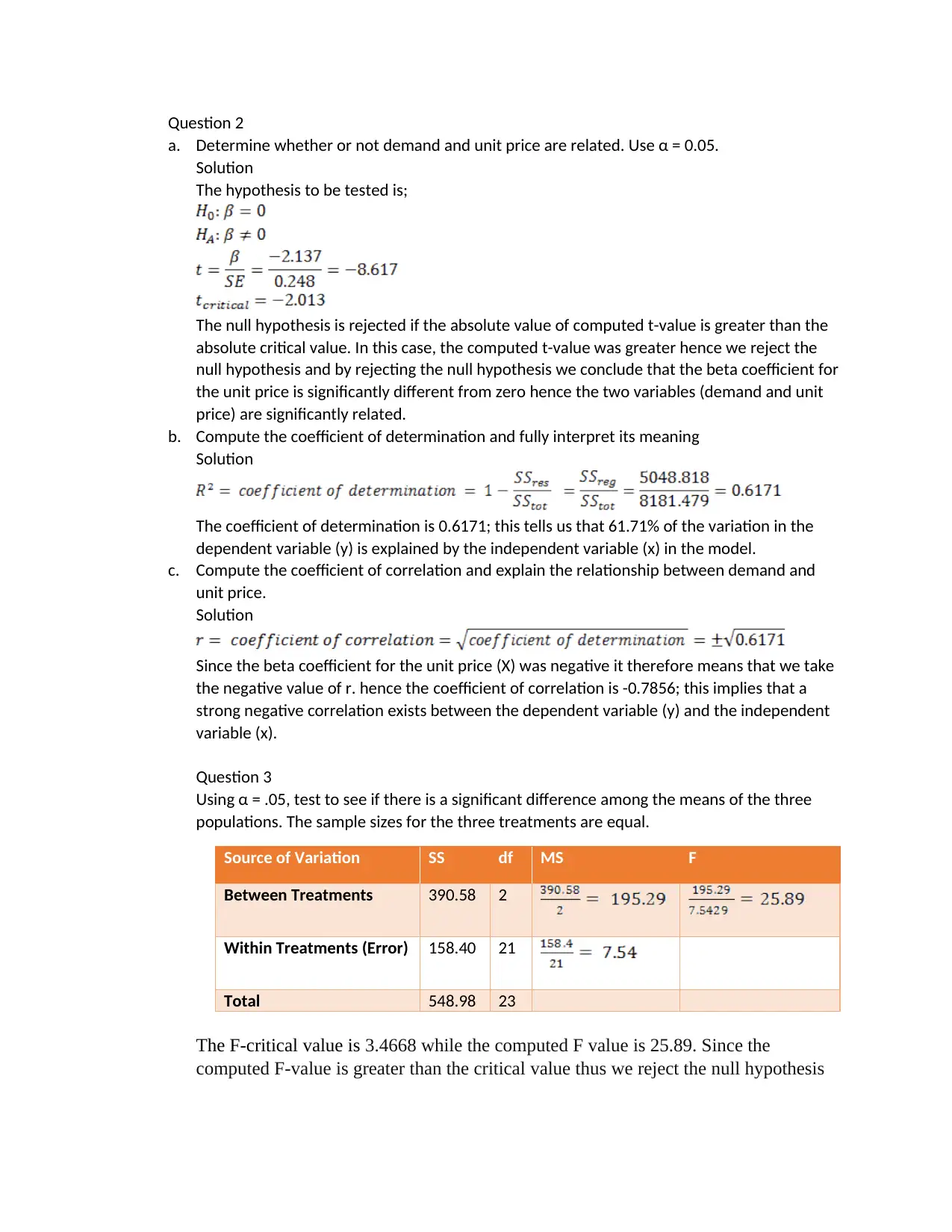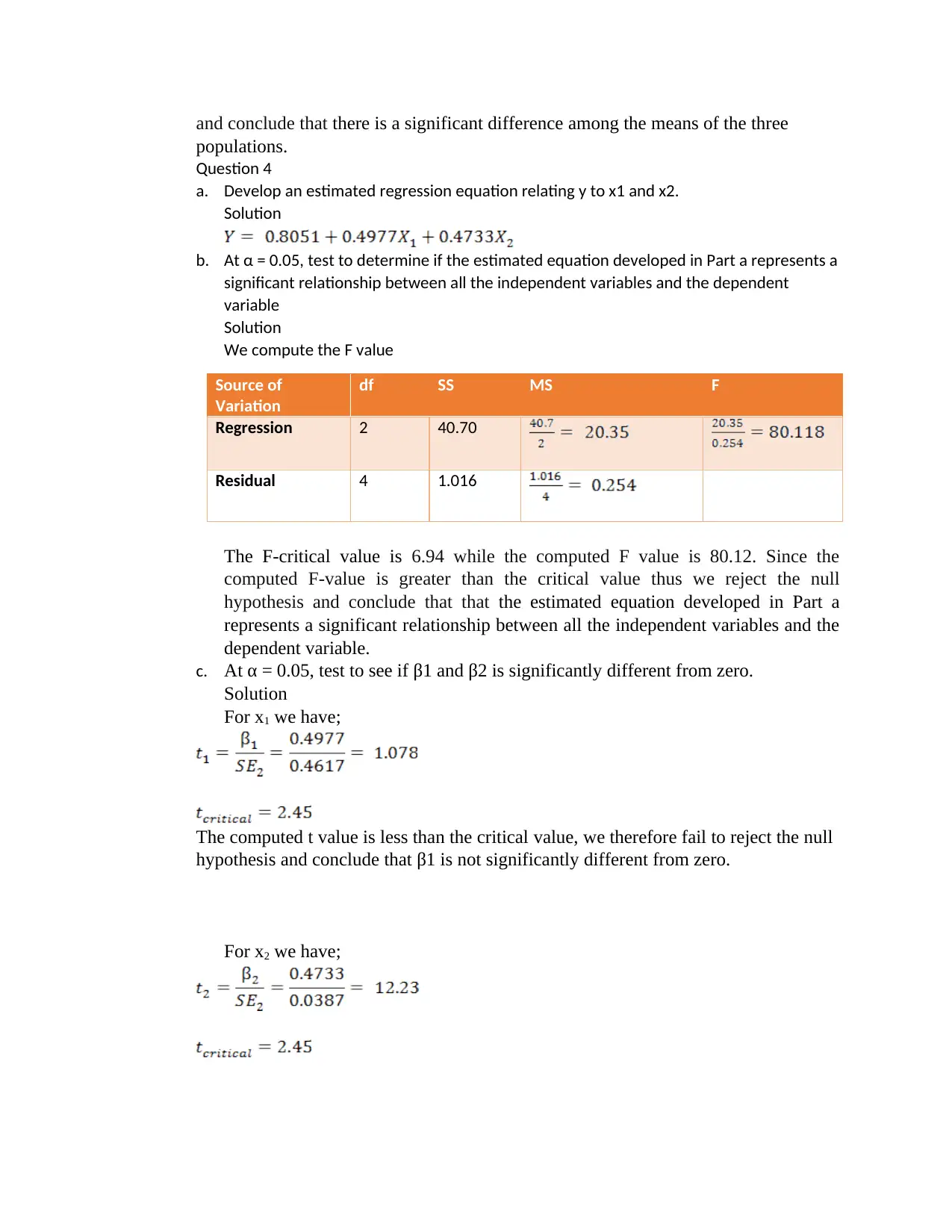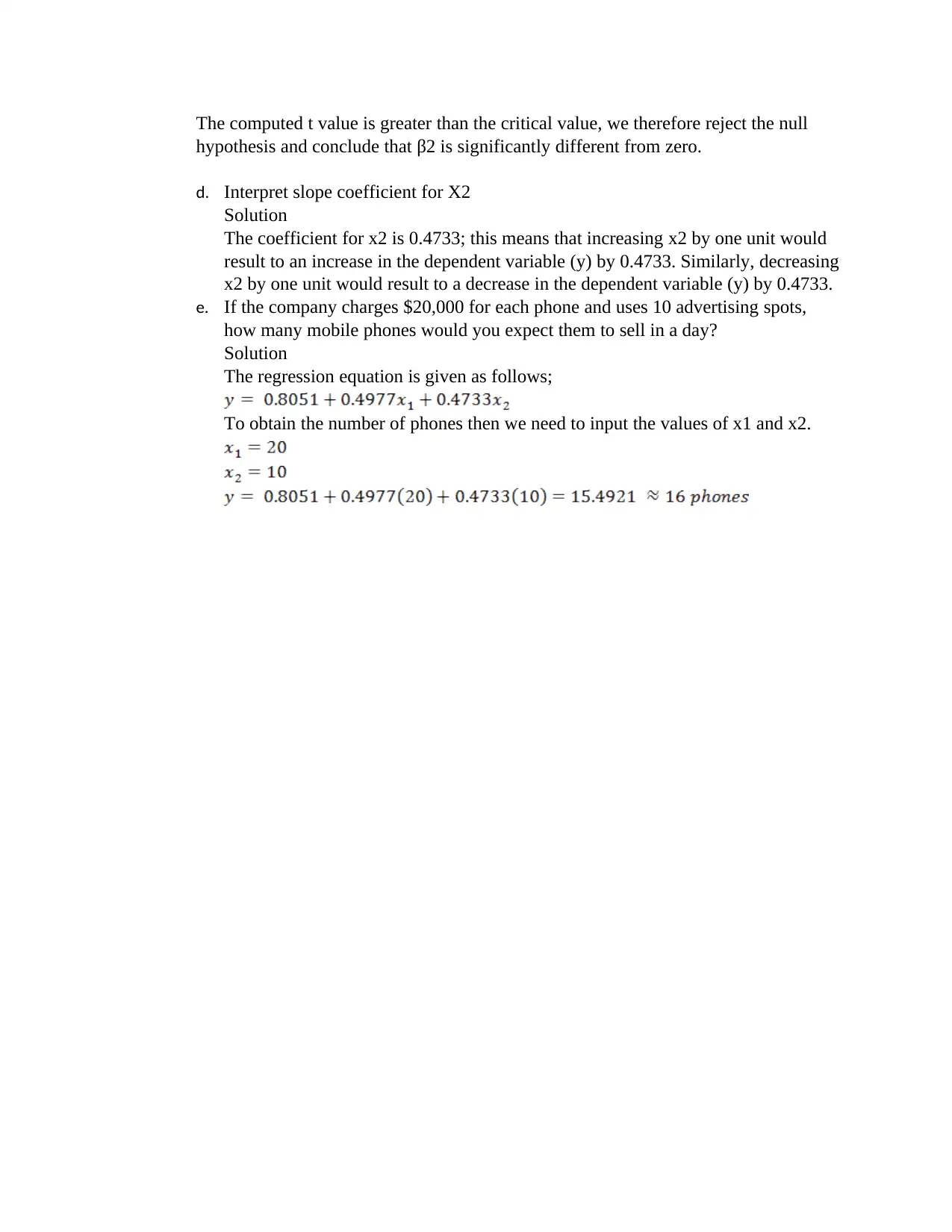HI6007 Statistics Assignment Solution - Holmes Institute - Week 10
VerifiedAdded on 2023/06/11
|5
|835
|148
Homework Assignment
AI Summary
This document presents a detailed solution to a statistics assignment, likely from Holmes Institute's HI6007 course. The solution covers various statistical concepts and techniques, including frequency distribution analysis with calculations of relative and percent frequencies, construction and interpretation of histograms, and determining appropriate measures of location for skewed data. It further includes hypothesis testing to determine the relationship between demand and unit price, computation and interpretation of the coefficient of determination and correlation. The assignment also involves ANOVA testing for significant differences among population means and regression analysis to develop estimated regression equations, test for significant relationships between variables, and interpret slope coefficients. Finally, it applies the regression equation to predict mobile phone sales based on pricing and advertising spend. Desklib provides a platform for students to access this and other solved assignments and past papers.
1 out of 5










![[object Object]](/_next/static/media/star-bottom.7253800d.svg)